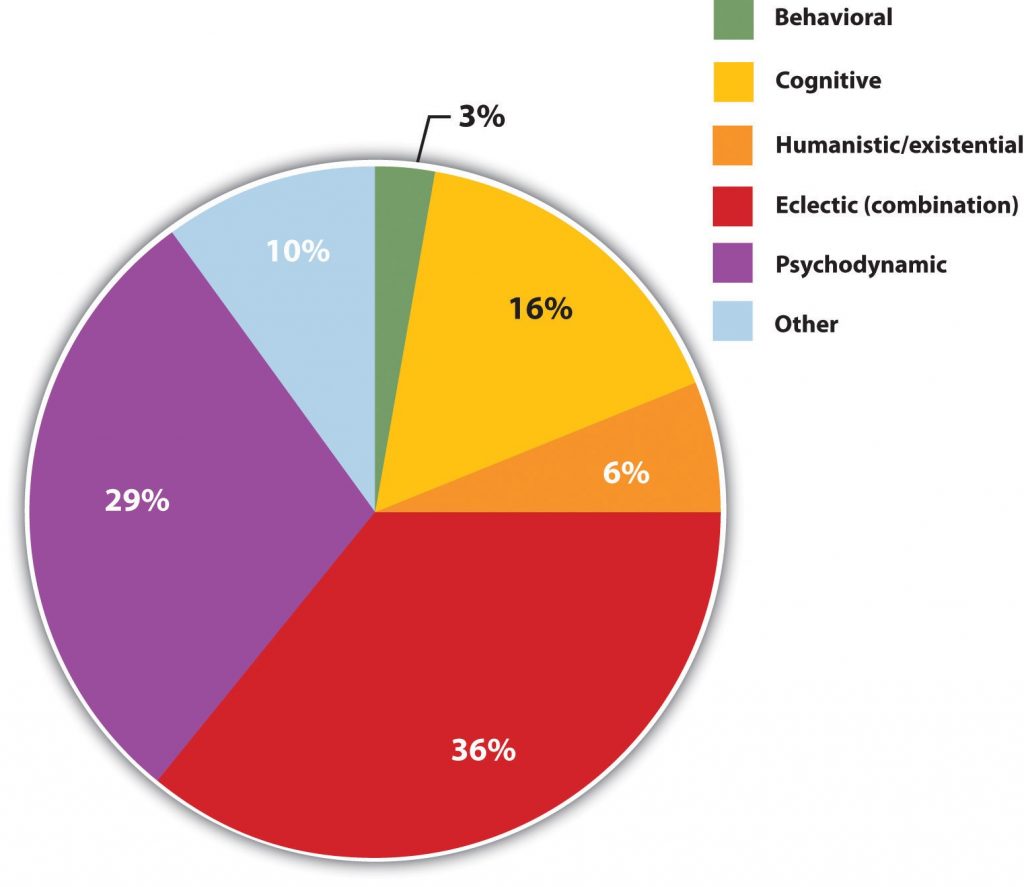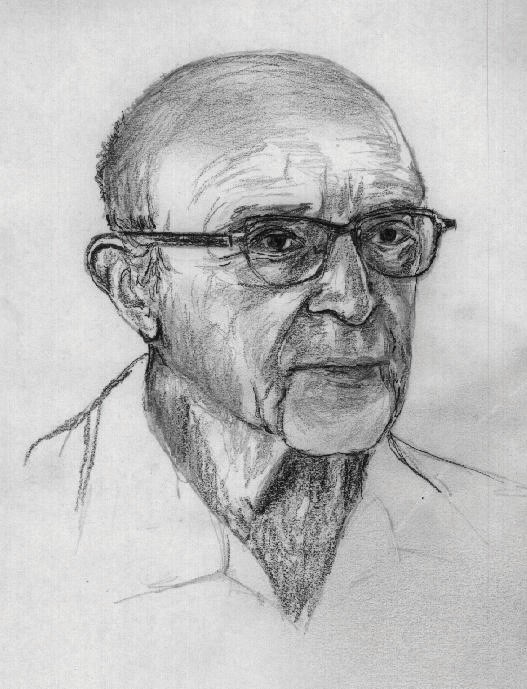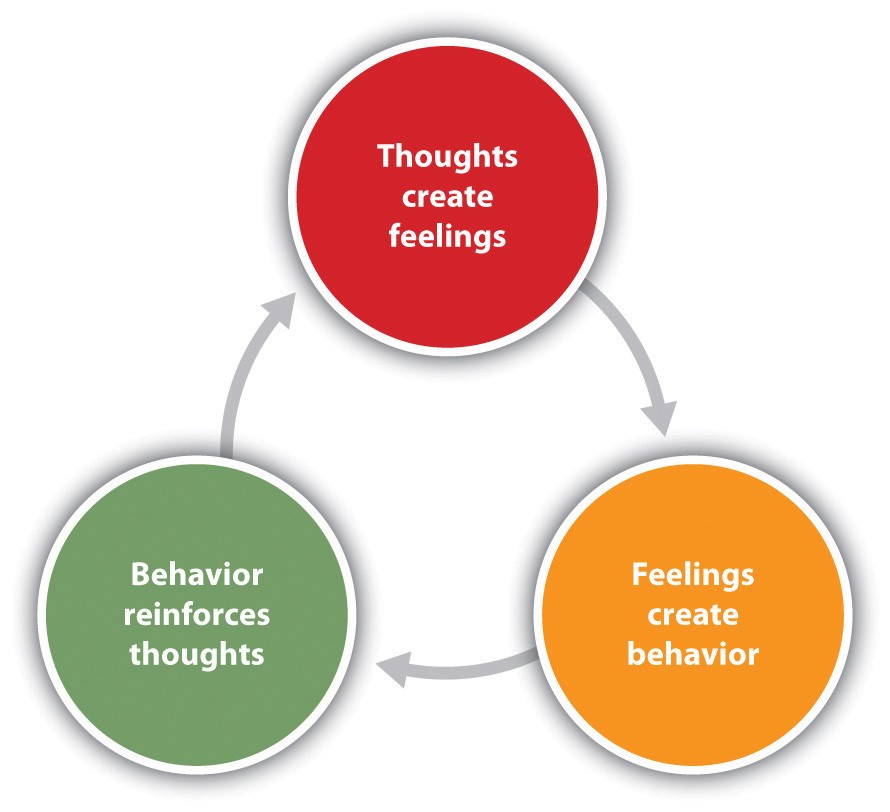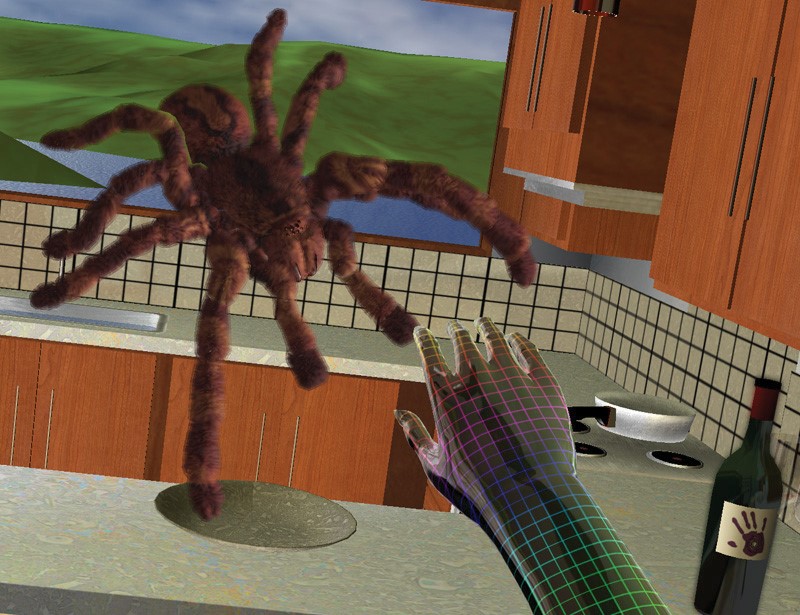Psychotherapy
Introduction
Just as psychologists consider the causes of disorder in terms of the biopsychosocial model of illness, treatment is also based on psychological, biological, and social approaches. The psychological approach to reducing disorder involves providing help to individuals or families through psychological therapy, including psychoanalysis, humanistic-oriented therapy, cognitive-behavioral therapy (CBT), and other approaches. The biomedical approach to reducing disorder is based on the use of medications to treat mental disorders such as schizophrenia, depression, and anxiety, as well as the employment of brain intervention techniques, including electroconvulsive therapy (ECT), transcranial magnetic stimulation (TMS), and psychosurgery. The social approach to reducing disorder focuses on changing the social environment in which individuals live to reduce the underlying causes of disorder. These approaches include group, couples, and family therapy, as well as community outreach programs.
A clinician may focus on any or all of the three approaches to treatment, but in making a decision about which to use, he or she will always rely on his or her knowledge about existing empirical tests of the effectiveness of different treatments. These tests, known as outcome studies, carefully compare people who receive a given treatment with people who do not receive a treatment, or with people who receive a different type of treatment. Taken together, these studies have confirmed that many types of therapies are effective in treating disorder.
Stangor, C. (2017). Introduction to psychology. Boston, MA: Flatworld.
Psychotherapy
Treatment for psychological disorder begins when the individual who is experiencing distress visits a counselor or therapist, perhaps in a church, a community center, a hospital, or a private practice. The therapist will begin by systematically learning about the patient’s needs through a formal psychological assessment, which is an evaluation of the patient’s psychological and mental health. During the assessment, the psychologist may give personality tests (e.g., Minnesota Multiphasic Personal Inventory [MMPI-2]) or projective tests (e.g., Rorschach Inkblot Test) and will conduct a thorough interview with the patient. The therapist may get more information from family members or school personnel.
In addition to the psychological assessment, the patient is usually seen by a physician to gain information about potential physical problems. In some cases of psychological disorder—and particularly for sexual problems—medical treatment is the preferred course of action. For instance, men who are experiencing erectile dysfunction disorder may need surgery to increase blood flow or local injections of muscle relaxants. Or they may be prescribed medications (such as Viagra, Cialis, or Levitra) that provide an increased blood supply to the penis, which are successful in increasing performance in about 70% of men who take them.
If a diagnosis is made, the therapist will select a course of therapy that he or she feels will be most effective. One approach to treatment is psychotherapy, the professional treatment for psychological disorder through techniques designed to encourage communication of conflicts and insight. The fundamental aspect of psychotherapy is that the patient directly confronts the disorder and works with the therapist to help reduce it. Therapy includes assessing the patient’s issues and problems, planning a course of treatment, setting goals for change, performing the treatment itself, and evaluating the patient’s progress. Therapy is practiced by thousands of psychologists and other trained practitioners in the United States and around the world, and is responsible for billions of dollars of the U.S. health budget.
To many people, therapy involves a patient lying on a couch with a therapist sitting behind and nodding sagely as the patient speaks. Though this approach to therapy (known as
psychoanalysis) is still practiced, it is in the minority. It is estimated that there are over 400 different kinds of therapy practiced by people in many fields. The therapists who provide these treatments include psychiatrists (who have a medical degree and can prescribe drugs) and clinical psychologists, as well as social workers, psychiatric nurses, and couples, marriage, and family therapists.

Source: Adapted from Norcross, J. C., Hedges, M., & Castle, P. H. (2002). Psychologists conducting psychotherapy in 2001: A study of the Division 29 membership. Psychotherapy: Theory, Research, Practice, Training, 39(1), 97–102.Stangor, C. (2017). Introduction to psychology. Boston, MA: Flatworld.
Psychodynamic Therapy
Psychodynamic therapy (psychoanalysis) is a psychological treatment based on Freudian and Neo-Freudian personality theories in which the therapist helps the patient explore the unconscious dynamics of personality. The analyst engages with the patient, usually in one-on-one sessions, often with the patient lying on a couch and facing away. The goal of the psychotherapy is for the patient to talk about his or her personal concerns and anxieties, allowing the therapist to try to understand the underlying unconscious problems that are causing the symptoms (the process of interpretation). The analyst may try out some interpretations on the patient and observe how he or she responds to them.
The patient may be asked to verbalize his or her thoughts through free association, in which the therapist listens while the client talks about whatever comes to mind, without any censorship or filtering. The client may also be asked to report on his or her dreams, and the therapist will use dream analysis to analyze the symbolism of the dreams in an effort to probe the unconscious thoughts of the client and interpret their significance. On the basis of the thoughts expressed by the patient, the analyst discovers the unconscious conflicts causing the patient’s symptoms and interprets them for the patient.
The goal of psychotherapy is to help the patient develop insight—that is, an understanding of the unconscious causes of the disorder (Epstein, Stern, & Silbersweig, 2001; Lubarsky & Barrett, 2006), but the patient often shows resistance to these new understandings, using defense mechanisms to avoid the painful feelings in his or her unconscious. The patient might forget or miss appointments, or act out with hostile feelings toward the therapist. The therapist attempts to help the patient develop insight into the causes of the resistance. The sessions may also lead to transference, in which the patient unconsciously redirects feelings experienced in an important personal relationship toward the therapist. For instance, the patient may transfer feelings of guilt that come from the father or mother to the therapist. Some therapists believe that transference should be encouraged, as it allows the client to resolve hidden conflicts and work through feelings that are present in the relationships.
One problem with traditional psychoanalysis is that the sessions may take place several times a week, go on for many years, and cost thousands of dollars. To help more people benefit, modern psychodynamic approaches frequently use shorter-term, focused, and goal-oriented approaches. In these “brief psychodynamic therapies,” the therapist helps the client determine the important issues to be discussed at the beginning of treatment and usually takes a more active role than in classic psychoanalysis (Levenson, 2010).
Epstein J., Stern E., & Silbersweig, D. (2001). Neuropsychiatry at the millennium: The potential for mind/brain integration through emerging interdisciplinary research strategies. Clinical Neuroscience Research, 1, 10–18; Lubarsky, L., & Barrett, M. S. (2006). The history and empirical status of key psychoanalytic concepts. Annual Review of Clinical Psychology, 2, 1–19.
Levenson, H. (2010). Brief dynamic therapy. Washington, DC: American Psychological Association
Stangor, C. (2017). Introduction to psychology. Boston, MA: Flatworld.
Humanistic Therapies
Just as psychoanalysis is based on the personality theories of Freud and the neo-Freudians, humanistic therapy is a psychological treatment based on the personality theories of Carl Rogers and other humanistic psychologists. Humanistic therapy is based on the idea that people develop psychological problems when they are burdened by limits and expectations placed on them by themselves and others, and the treatment emphasizes the person’s capacity for self-realization and fulfillment. Humanistic therapies attempt to promote growth and responsibility by helping clients consider their own situations and the world around them and how they can work to achieve their life goals.
Carl Rogers developed person-centered therapy (or client-centered therapy), an approach to treatment in which the client is helped to grow and develop as the therapist provides a comfortable, nonjudgmental environment. In his book, A Way of Being (1980), Rogers argued that therapy was most productive when the therapist created a positive relationship with the client—a therapeutic alliance. The therapeutic alliance is a relationship between the client and the therapist that is facilitated when the therapist is genuine (i.e., he or she creates no barriers to free-flowing thoughts and feelings), when the therapist treats the client with unconditional positive regard (i.e., values the client without any qualifications, displaying an accepting attitude toward whatever the client is feeling at the moment), and when the therapist develops empathy with the client (i.e., that he or she actively listens to and accurately perceives the personal feelings that the client experiences).
The development of a positive therapeutic alliance has been found to be exceedingly important to successful therapy. The ideas of genuineness, empathy, and unconditional positive regard in a nurturing relationship in which the therapist actively listens to and reflects the feelings of the client is probably the most fundamental part of contemporary psychotherapy (Prochaska & Norcross, 2007).

Source: Courtesy of http://commons.wikimedia.org/wiki/File:Carl_Ransom_Rogers.jpg.Stangor, C. (2017). Introduction to psychology. Boston, MA: Flatworld.
Prochaska, J. O., & Norcross, J. C. (2007). Systems of psychotherapy: A transtheoretical analysis (6th ed.). Pacific Grove, CA: Brooks/Cole.
Stangor, C. (2017). Introduction to psychology. Boston, MA: Flatworld.
Cognitive Behavioral Therapy
CBT is a very broad approach that is used for the treatment of a variety of problems, including mood, anxiety, personality, eating, substance abuse, attention-deficit, and psychotic disorders. It has been found to be effective, and often more effective than other approaches, in hundreds of studies (Hofmann, Asnaani, Vonk, Sawyer, & Fang, 2012), although there is some evidence that it is becoming less effective over time (Johnsen, & Friborg, 2015). CBT treats the symptoms of the disorder (the behaviors or the cognitions) and does not attempt to address the underlying issues that cause the problem. The goal is simply to stop the negative cycle by intervening to change cognition or behavior. The client and the therapist work together to develop the goals of the therapy, the particular ways that the goals will be reached, and the timeline for reaching them. The procedures are problem-solving and action-oriented, and the client is forced to take responsibility for his or her own treatment. The client is assigned tasks to complete that will help improve the disorder and takes an active part in the therapy. The treatment usually lasts between 10 and 20 sessions.
Depending on the particular disorder, some CBT treatments may be primarily behavioral in orientation, focusing on the principles of classical, operant, and observational learning, whereas other treatments are more cognitive, focused on changing negative thoughts related to the disorder. But almost all CBT treatments use a combination of behavioral and cognitive approaches.

Stangor, C. (2017). Introduction to psychology. Boston, MA: Flatworld.
Behavioral Aspects of CBT
In some cases, the primary changes that need to be made are behavioral. Behavioral therapy is psychological treatment that is based on principles of learning. The most direct approach is through operant conditioning using reward or punishment. Reinforcement may be used to teach new skills to people—for instance, those with autism spectrum disorder or schizophrenia (Granholm et al., 2008; Herbert et al., 2005; Scattone, 2007). If the patient has trouble dressing or grooming, then reinforcement techniques, such as providing tokens that can be exchanged for snacks, are used to reinforce appropriate behaviors such as putting on one’s clothes in the morning or taking a shower at night. If the patient has trouble interacting with others, reinforcement will be used to teach the client how to more appropriately respond in public—for instance, by maintaining eye contact, smiling when appropriate, and modulating tone of voice.
As the patient practices the different techniques, the appropriate behaviors are shaped through reinforcement to allow the client to manage more complex social situations. In some cases observational learning may also be used; the client may be asked to observe the behavior of others who are more socially skilled to acquire appropriate behaviors. People who learn to improve their interpersonal skills through skills training may be more accepted by others and this social support may have substantial positive effects on their emotions.
When the disorder is anxiety or phobia-related, then the goal of the CBT is to reduce the negative affective responses to the feared stimulus. Exposure therapy is a behavioral therapy based on the classical conditioning principle of extinction, in which people are confronted with a feared stimulus with the goal of decreasing their negative emotional responses to it (Wolpe, 1973). Exposure treatment can be carried out in real situations or through imagination, and it is used in the treatment of panic disorder, agoraphobia, social phobia, OCD, and posttraumatic stress disorder (PTSD).
In flooding, a client is exposed to the source of his fear all at once. An agoraphobic might be taken to a crowded shopping mall or someone with an extreme fear of heights to the top of a tall building. The assumption is that the fear will subside as the client habituates to the situation while receiving emotional support from the therapist during the stressful experience. An advantage of the flooding technique is that it is quick and often effective, but a disadvantage is that the patient may relapse after a short period of time.
More frequently, the exposure is done more gradually. Systematic desensitization is a behavioral treatment that combines imagining or experiencing the feared object or situation with relaxation exercises (Wolpe, 1973). The client and the therapist work together to prepare a hierarchy of fears, starting with the least frightening, and moving to the most frightening scenario surrounding the object. The patient then confronts her fears in a systematic manner, sometimes using her imagination but usually, when possible, in real life.
Desensitization techniques use the principle of counterconditioning, in which a second incompatible response (relaxation, e.g., through deep breathing) is conditioned to an already conditioned response (the fear response). The continued pairing of the relaxation responses with the feared stimulus as the patient works up the hierarchy gradually leads the fear response to be extinguished and the relaxation response to take its place.
Behavioral therapy works best when people directly experience the feared object. Fears of spiders are more directly habituated when the patient interacts with a real spider, and fears of flying are best extinguished when the patient gets on a real plane. But it is often difficult and expensive to create these experiences for the patient. Recent advances in virtual reality have allowed clinicians to provide CBT in what seems like real situations to the patient. In virtual reality CBT, the therapist uses computer-generated, three-dimensional, lifelike images of the feared stimulus in a systematic desensitization program. Specially designed computer equipment, often with a head-mount display, is used to create a simulated environment. A common use is in helping soldiers who are experiencing PTSD return to the scene of the trauma and learn how to cope with the stress it invokes.
Some of the advantages of the virtual reality treatment approach are that it is economical, the treatment session can be held in the therapist’s office with no loss of time or confidentiality, the session can easily be terminated as soon as a patient feels uncomfortable, and many patients who have resisted live exposure to the object of their fears are willing to try the new virtual reality option first.

Stangor, C. (2017). Introduction to psychology. Boston, MA: Flatworld.
Aversion Therapy
Aversion therapy is a type of behavior therapy in which positive punishment is used to reduce the frequency of an undesirable behavior. An unpleasant stimulus is intentionally paired with a harmful or socially unacceptable behavior until the behavior becomes associated with unpleasant sensations and is hopefully reduced. A child who wets his bed may be required to sleep on a pad that sounds an alarm when it senses moisture. Over time, the positive punishment produced by the alarm reduces the bedwetting behavior (Houts, Berman, & Abramson, 1994). Aversion therapy is also used to stop other specific behaviors such as nail biting (Allen, 1996). Alcoholism has long been treated with aversion therapy (Baker & Cannon, 1988). In a standard approach, patients are treated at a hospital where they are administered a drug, antabuse, that makes them nauseous if they consume any alcohol. The technique works very well if the user keeps taking the drug (Krampe et al., 2006), but unless it is combined with other approaches the patients are likely to relapse after they stop the drug.
Cognitive Aspects of CBT
While behavioral approaches focus on the actions of the patient, cognitive therapy is a psychological treatment that helps clients identify incorrect or distorted beliefs that are contributing to disorder. In cognitive therapy the therapist helps the patient develop new, healthier ways of thinking about themselves and about the others around them. The idea of cognitive therapy is that changing thoughts will change emotions, and that the new emotions will hen influence behavior.
The goal of cognitive therapy is not necessarily to get people to think more positively, but rather to think more accurately. For instance, a person who thinks “no one cares about me” is likely to feel rejected, isolated, and lonely. If the therapist can remind the person that she has a mother or daughter who does care about her, more positive feelings will likely follow. Similarly, changing beliefs from “I have to be perfect” to “No one is always perfect—I’m doing pretty good,” from “I am a terrible student” to “I am doing well in some of my courses,” or from “She did that on purpose to hurt me” to “Maybe she didn’t realize how important it was to me” may all be helpful.
The psychiatrist Aaron T. Beck and the psychologist Albert Ellis (1913–2007) together provided the basic principles of cognitive therapy. Ellis (2004) called his approach rational emotive behavior therapy (REBT) or rational emotive therapy (RET), and he focused on pointing out the flaws in the patient’s thinking. Ellis noticed that people experiencing strong negative emotions tend to personalize and overgeneralize their beliefs, leading to an inability to see situations accurately (Leahy, 2003). In REBT, the therapist’s goal is to challenge these irrational thought patterns, helping the patient replace the irrational thoughts with more rational ones, leading to the development of more appropriate emotional reactions and behaviors.

Sources: Aaron Beck Photo: Retrieved from https://en.wikipedia.org/wiki/Aaron_T._Beck#/media/File:Aaron_Beck_2016.jpg. Licensed under CC BY-SA-4.0. Stangor, C. (2017). Introduction to psychology. Boston, MA: Flatworld.
Beck’s (Beck, 1995; Beck, Freeman, & Davis, 2004) cognitive therapy was based on his observation that people who were depressed generally had a large number of highly accessible negative thoughts that influenced their thinking. His goal was to develop a short-term therapy for depression that would modify these unproductive thoughts. Beck’s approach challenges the client to test his beliefs against concrete evidence. If a client claims that “everybody at work is out to get me,” the therapist might ask him to provide instances to corroborate the claim. At the same time the therapist might point out contrary evidence, such as the fact that a certain coworker is actually a loyal friend or that the patient’s boss had recently praised him.
Psychotherapy – Video
Amanda Hunt (2015, May 6). Psychoanalysis and Psychodynamic Therapies [Video File]. Retrieved from https://www.youtube.com/watch?v=QJWS6WmaoPM. Standard YouTube license.
Pinnacle of Man TM. (2016, September 11). Cognitive behavioral therapy (CBT) simply explained. [Video File]. Retrieved from https://www.youtube.com/watch?v=WhMmZJ3H1E8&t=77s. Standard YouTube License.
CrashCourse. (2014, October 21). Getting help-psychotherapy: Crash course psychology #35. [Video File]. Retrieved from https://www.youtube.com/watch?v=6nEL44QkL9w&t=324s. Standard YouTube License.
Summary
Psychological disorders create a tremendous individual, social, and economic drain on society. Psychologists work to reduce this burden by preventing and treating disorder. Psychologists base this treatment and prevention of disorder on the bio-psycho-social model, which proposes that disorder has biological, psychological, and social causes, and that each of these aspects can be the focus of reducing disorder.
Treatment for psychological disorder begins with a formal psychological assessment. In addition to the psychological assessment, the patient is usually seen by a physician to gain information about potential physical problems. One approach to treatment is psychotherapy. The fundamental aspect of psychotherapy is that the patient directly confronts the disorder and works with the therapist to help reduce it.
Psychodynamic therapy (also known as psychoanalysis) is a psychological treatment based on Freudian and Neo-Freudian personality theories. The analyst engages with the patient in one-on-one sessions during which the patient verbalizes his or her thoughts through free associations and by reporting on his or her dreams. The goal of the therapy is to help the patient develop insight—that is, an understanding of the unconscious causes of the disorder.
Humanistic therapy is a psychological treatment based on the personality theories of Carl Rogers and other humanistic psychologists. Humanistic therapies attempt to promote growth and responsibility by helping clients consider their own situations and the world around them and how they can work to achieve their life goals. Humanistic therapy also promotes the ideas of genuineness, empathy, and unconditional positive regard in a nurturing relationship in which the therapist actively listens to and reflects the feelings of the client; this relationship is probably the most fundamental part of contemporary psychotherapy.
Another form of treatment, known as Cognitive-behavior therapy (CBT), is a structured approach to treatment that attempts to reduce psychological disorders through systematic procedures based on cognitive and behavioral principles. CBT is a very broad approach used for the treatment of a variety of problems. Behavioral aspects of CBT may include operant conditioning using reward or punishment. When the disorder is anxiety or phobia, then the goal of the CBT is to reduce the negative affective responses to the feared stimulus through exposure therapy, flooding, or systematic desensitization. Aversion therapy is a type of behavior therapy in which positive punishment is used to reduce the frequency of an undesirable behavior. Cognitive aspects of CBT include treatment that helps clients identify incorrect or distorted beliefs that are contributing to disorder.
Stangor, C. (2017). Introduction to psychology. Boston, MA: Flatworld.